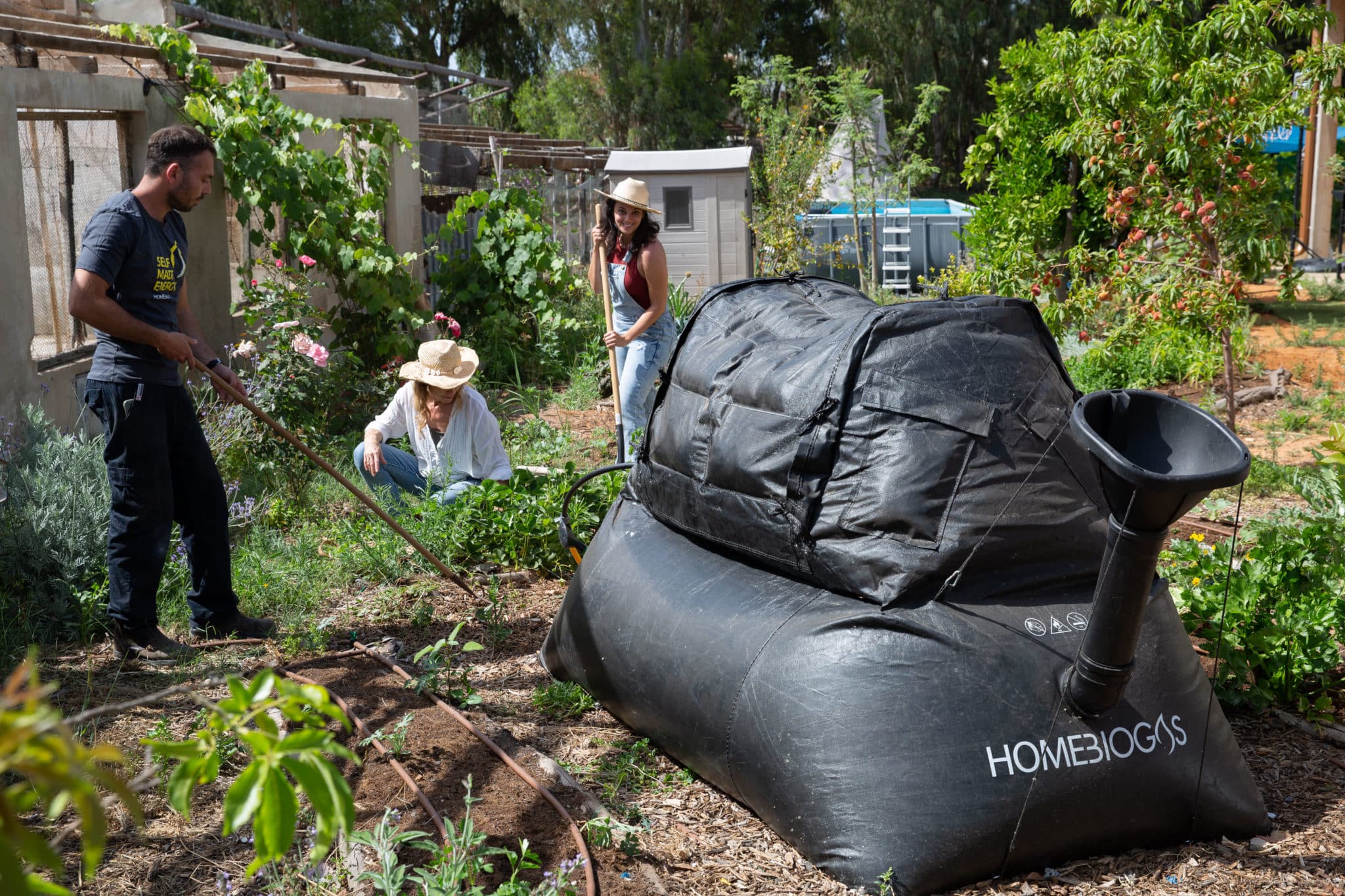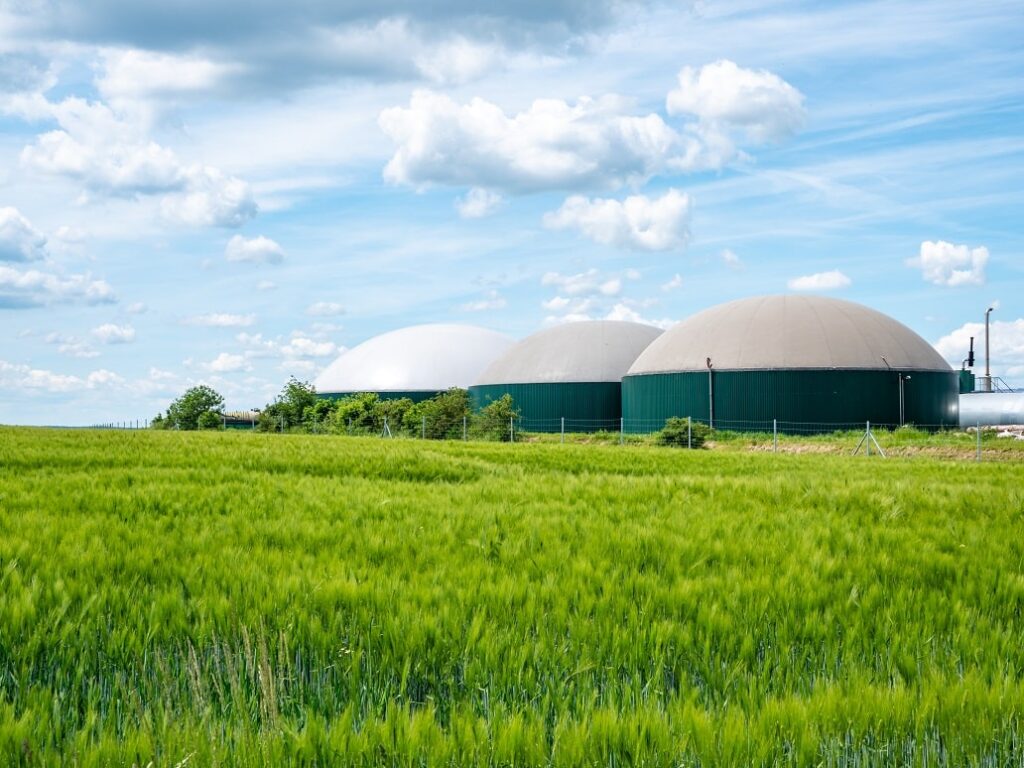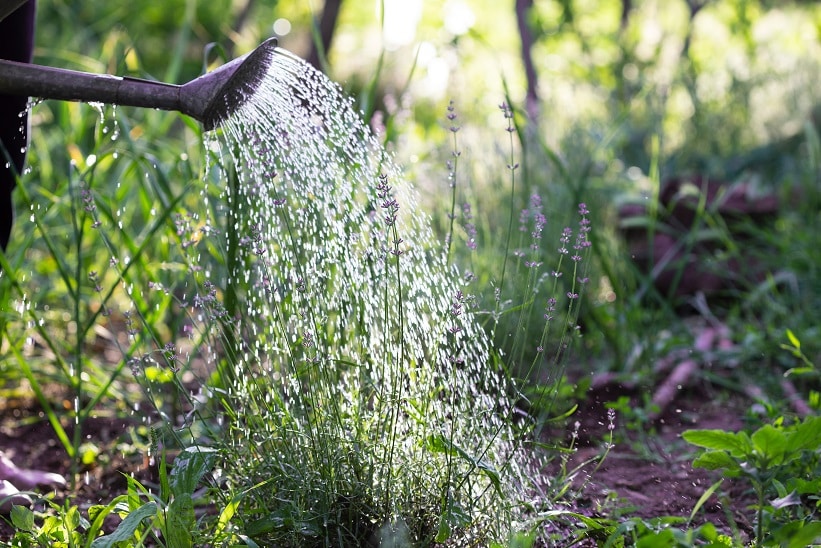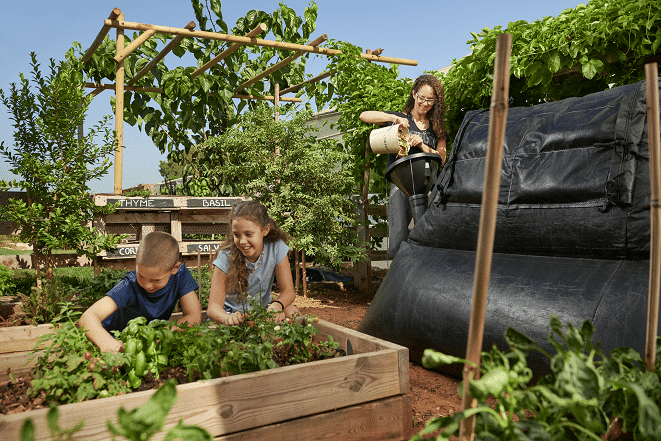
What is a biodigester?
A biodigester is a sealed container where microorganisms break down organic material into biogas and fertilizer through a natural process. This anaerobic digestion process is possible because the biodigester creates an oxygen-free environment where bacteria can consume the waste and thrive.
Biodigesters can be used to process many organic materials, including food scraps, agricultural waste, and even animal manure — which makes them a sustainable solution to the problem of organic waste disposal.
As the bacteria digest the organic materials, they produce methane gas which can be captured and used as a renewable energy source. The leftovers are called digestate, a nutrient-rich mixture that makes an excellent organic fertilizer.
Types of different biodigesters
The US EPA classifies biodigesters using four criteria. According to their operating temperature, biodigesters can be mesophilic or thermophilic.
- Mesophilic digesters operate at a temperature range of 86 – 100°F (30 – 38°C). They’re more stable, which also makes them the most common. The downside is that the system produces smaller amounts of biogas and can’t reduce pathogen concentrations to no detectable levels.
- Thermophilic digesters operate between 122 and 140°F (50 – 60°C). These systems are suitable when you need to eliminate enough pathogens to produce Class A quality biosolids that meet US EPA guidelines. Thermophilic biodigesters are more expensive to operate and require increased maintenance.
Based on feedstock, digesters can process one specific feedstock type or multiple feedstocks (co-digestion).
- Biodigesters for agricultural waste can process manure and crop residues, most suitable for medium and large farms.
- Small-scale biodigesters that break down food, yard, and other waste generated by households and businesses.
- Industrial biodigesters break down organic waste generated by factories and other industrial processes.
- Biodigesters for wastewater treatment sludge are usually part of industrial wastewater treatment plants.
- Biodigesters for co-digestion feedstocks can handle multiple organic materials at the same time.
Digesters can be wet (low-solids) or dry (high-solids) if we consider moisture content.
- Wet digesters transform materials with less than 15% solids content.
- Dry digesters break down stackable feedstock with a solids content of over 15%.

How does a biodigester waste system work?
Firstly, you must collect the organic matter to feed the bacteria that produce biogas. Depending on your home biodigester, it can include kitchen scraps, leftovers, animal droppings, crop residues, or even human waste.
Install the biodigester on a flat surface that gets plenty of sunlight. To activate the digester, you’ll need some cow manure and water — bacteria need between 1 and 4 weeks to become productive.
Once you activate the microorganisms, the fermentation process starts. Bacteria break down materials through anaerobic digestion. The fuel obtained during this process is then collected and stored in a separate tank or bag. The remaining digested material is discharged from the biodigester as a nutrient-rich liquid fertilizer known as digestate.
To get the most biogas production out of your system, you’ll need to add water and other feedstocks into the biodigester. The recommended ratio of water to scraps is 1:1 — unless the manufacturer provides different instructions.
The collected biogas can become a source of fuel for cooking, heating, or even for generating electricity — this, too, will depend on your system. It’s a sustainable way to manage waste, as it reduces the number of discards from landfills, produces renewable energy, and provides an organic source of fertilizer for plants.
Benefits and drawbacks of biodigesters
Advantages of having a home biodigester:
- The system will help you reduce your impact on the environment.
- You can use the biogas produced from digestion for cooking or heating.
- The remaining digested material acts like a nutrient-rich fertilizer for your garden and lawn, improving soil quality and health.
- A home biodigester can help reduce energy costs by providing an energy source independent of fossil fuels.

HomeBiogas 2
Designed for the next generation of green innovation.
Disadvantages of having a home biodigester:
- The upfront cost of buying and installing a biodigester can be pretty high.
- Most home biodigesters require regular maintenance, such as feeding the digester and monitoring production, which can be time-consuming.
- Most home biodigesters typically process specific types of feedstock only, so you won’t be able to eliminate all your trash.
- A home biodigester is usually small-scale, so you can’t handle large amounts of organic waste with a small system.

What is the cost of home biodigesters?
Depending on the size and complexity of the system you want, you could be looking at spending anywhere from $1,000 to over $6,000! And if you’re planning to use such a system on a farm with a backyard biogas plant that can handle all your kitchen scraps, garden waste, and animal manure, the price can go even higher.
So what kind of costs can you expect for a home biodigester?
If you’re looking for a small system to handle limited waste, you’ll likely spend around $1,000. But you could pay $2,000 and more if you need something more complex.
Other factors that influence the long-term costs of a home biodigester are whether you can supply enough waste to keep the system running all year round, maintenance and repairs, and the prices of replacement parts and consumables.
How long does a biodigester last?
The lifespan of a biodigester will vary with the manufacturer. Factors like the quality of materials used, maintenance, and usage will also impact the system’s longevity. Generally, a well-maintained and properly used biodigester can last 15 to 20 years.
It’s important to note that external factors such as extreme weather conditions, natural disasters, or accidents impact your experience with the biodigester.
Where are biodigesters commonly used?
Home biodigesters are specifically prevalent in rural areas worldwide — HomeBiogas, for example, provides waste management solutions for households in over 100 countries.
Asia has the largest number of industrial biogas plants and home biodigesters — China alone hosts over 100,000 biogas plants and millions of household biogas units. Europe mostly focuses on building industrial biogas plants to support green energy sources and mitigate climate change.
Developing countries in Latin America and Africa have shown significant interest in encouraging households to invest in home biodigesters. Such projects aim to improve lifestyle in remote areas while eliminating emissions from manure storage and fossil fuel usage for cooking.

How do biodigesters affect greenhouse gas?
Biodigesters can positively impact greenhouse gas emissions by reducing methane emissions.
Methane is a potent greenhouse gas estimated to have a global warming potential of more than 80 times greater than carbon dioxide over a 20-year time frame. We can significantly impact the environment by eliminating small amounts of methane emissions. By capturing and using methane through industrial and home biodigesters, we can reduce its release into the atmosphere and help mitigate its harmful effects on the climate.
Furthermore, biogas replaces fossil fuels as a green energy source, reducing CO2 emissions and the overall carbon footprint of managing waste.
Biodigesters also indirectly reduce emissions by preventing water pollution. When you convert human waste into biogas, you eliminate the need for wastewater treatment, leading to a cleaner environment.
HomeBiogas offers biodigester solutions
HomeBiogas is a leading manufacturer of home biogas digesters, helping households, schools, businesses, and nonprofit organizations turn trash into energy across multiple countries. The HomeBiogas systems are compact and easy to install and use, so homeowners can produce biogas from their kitchen scraps.
The HomeBiogas systems come in multiple sizes to meet the needs of various households. With such a biodigester, you can produce up to 4 hours of cooking gas per day and lower your greenhouse gas emissions by up to six tons of CO2 per year — equivalent to the emissions generated when producing 7-month worth of energy for an average household.
Additionally, the home biodigester produces liquid fertilizer that enriches your soil, allowing you to grow better, healthier crops without chemical substances.

Final Thoughts
Every household using a biodigester can significantly contribute to fighting climate change.
While not a universal solution to waste management, home biodigesters can play an essential role in running a sustainable, self-sufficient household in warm climates. Turning trash into biogas reduces your carbon footprint and protects landfills, turning your home into an environmentally friendly environment for you and your family.






